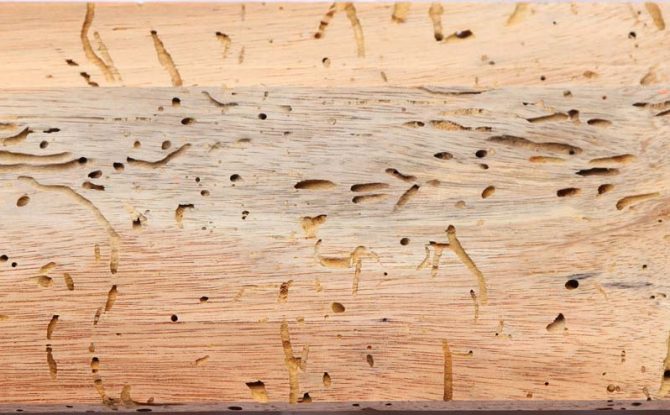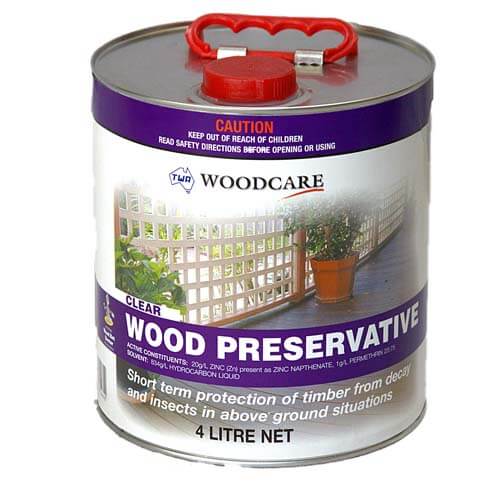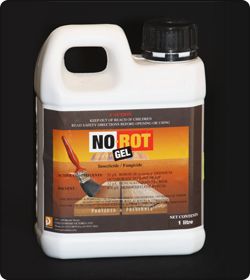
Borer Treatment
Borer damage to timber is typically less significant when compared to termites. But if left untreated, they will eventually create similar damage. This article will hopefully help you understand how borer damage occurs and what Preschem products can be used successfully for borer treamtment.
We will not be focussing the discusson on borer that attack living trees or unseasoned timber. This article will focus on the most comon type of borer damage experienced in and around the home, which is from Lyctid Borer, more comonly known as Powder Post Beetle. Lyctid’s attack dry or seasoned timber, and exclusively the sapwood of susceptible hardwood species.
Anobium or Furnuture Beetle, is the species of borer that attack softwood species like Radiata or Baltic Pine. They leave similar tell-tale holes to Lyctids, but will not attack the sapwood in hardwood species.


Wood borer damage occurs due to the presence of flying beetles that are insects. However, it is not the adult beetles themselves that cause the damage, but rather their juvenile or larvae stage during their life cycle. The borer’s life begins when the adult beetle lays its eggs on the growing wood of a tree, typically in a minor flaw in the living tree, an existing borer hole, or just beneath the bark. These eggs can remain dormant for several years or even decades, patiently waiting for optimal conditions. The borer larvae target living timber within a tree, with a peak in activity during the warm seasons of spring and summer.
Once the larvae hatch from the eggs, they begin consuming the timber and creating a network of holes known as “galleries.” This feeding process continues until the larvae enter the pupal stage, undergoing a transformation into adult beetles. After completing this cycle, the adult beetles emerge from the timber surface, leaving behind distinctive pin holes. Often, they also leave a visible trace of fine dust surrounding these holes. The presence of new holes and dust serves as a reliable indicator of recent borer activity.


Typically, borers tend to target the sapwood of a tree, although they may also attack the heartwood depending on the circumstances after hatching. If a borer egg remains dormant for an extended period, the sapwood it was laid in can transform into heartwood as the tree grows. In such cases, the borer must consume its way out, which explains the occasional presence of borer galleries in wood products. However, most borer species primarily attack trees during their lifetime and are unlikely to persist in the future. This holds true for species like pinhole or longicorn borers.
Nevertheless, there is one species of borer, known as the Anobium borer or Powder Post borer, that continues to target only the sapwood even after the tree has died. These beetles leave distinctive traces of powder around or beneath the exit holes, hence their common name. They specifically infest the dead sapwood of certain species that contain high starch levels.
If you happen to observe new borer holes in the timber around your home, particularly accompanied by fresh dust (indicating Anobium borer), Preschem offers two effective treatments to prevent further infestation. Both products are registered with the APVMA, and they have unique strengths, covering a wider range of situations.
It should be noted that both of the following products work best when applied to raw timber. This may require you to sand or stip back any paint or varnish before you begin.
The first borer treatment product is Clear Wood Preservative, a solvent-based timber preservative. It is applied with a brush or applicator and serves as a versatile solution, containing both a fungicide and an insecticide, specifically Permethrin. Clear Wood Preservative reaches a depth of up to 3-4mm, swiftly eliminating emerging adult borers. Despite its effective action, Clear Wood Preservative dries clear and becomes virtually undetectable, even on weathered grey timber. In case you possess a small needleless syringe, you can also inject Clear Wood Preservative directly into the borer hole to eliminate any active borers still residing within the galleries beneath the surface.

Another noteworthy borer treatment is No-Rot Gel, another Preschem offering highly effective against borers. This water-based diffusible timber preservative contains Boron and Benzalkonium Chloride, both functioning as fungicides to prevent decay. Notably, boron exhibits a dual functionality as an insecticide. No-Rot Gel, being diffusible and water-based, permeates hardwoods to a depth of 10-15mm, creating a larger treatment zone that is more likely to impede borers lurking deeper within the timber boards. The limitation of this product is that it’s not suited for unsealed timber that’s exposed to the weather, as it is water soluble.

After treatment, it is advisable to capture a photograph of the affected area as a record, aiding in monitoring for any new borer activity, and reapply the treatment as necessary.
